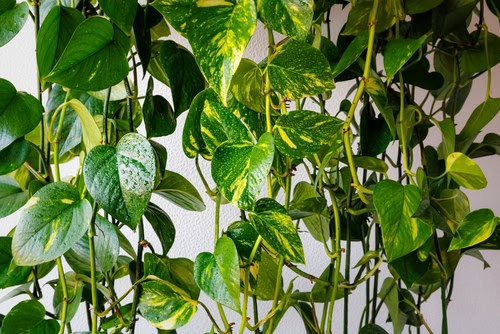Pothos plants are a popular choice for indoor gardeners, thanks to their attractive, trailing vines and ease of care. However, some plant owners may notice their pothos plant dripping water, which can be concerning. In this article, we will explore the reasons behind this phenomenon and provide tips on how to prevent it from happening.
Understanding the pothos plant is essential to identifying the reasons why it may be dripping water. Pothos plants are tropical plants that thrive in warm, humid environments, making them ideal for indoor growth.
However, they can be sensitive to overwatering and require proper drainage to prevent water from accumulating in the soil. Additionally, pothos plants can be affected by changes in temperature and humidity levels, which can lead to guttation, a process where the plant releases excess water through its leaves.
Key Takeaways:
- Pothos plants are tropical plants that require warm, humid environments to thrive.
- Overwatering and poor drainage can cause pothos plants to drip water.
- Changes in temperature and humidity levels can also lead to guttation in pothos plants.
More on this category:
- Why Is My Polka Dot Plant Wilting?
- Why Is My Polka Dot Plant Leggy?
- Why Is My Polka Dot Plant Fuzzy?
Understanding Pothos Plant
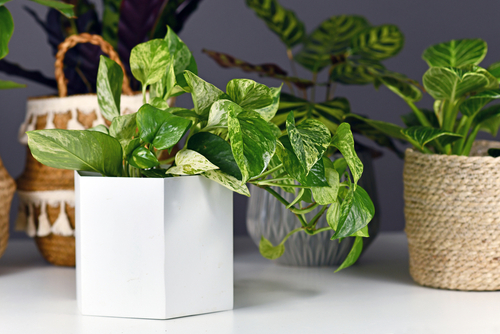
Pothos plant, also known as Epipremnum Aureum, is a popular indoor plant that is easy to care for and can thrive in various indoor conditions. It is a member of the Araceae family and is native to the Solomon Islands.
Pothos is an attractive plant with heart-shaped leaves that come in different shades of green, yellow, and white, making it a great addition to any indoor space.
Pothos Plant Requirements
To keep your pothos plant healthy, it is essential to understand its requirements. Pothos is a low-maintenance plant that can grow in a wide range of lighting conditions, from low to bright indirect light. However, it is important to note that the amount of light it receives affects the color of its leaves.
In terms of watering, pothos plants prefer to be kept slightly moist but not waterlogged. Overwatering can lead to root rot, which can be fatal to the plant. It is advisable to allow the soil to dry out slightly before watering again.
Additionally, pothos plants are sensitive to fluoride, so it is recommended to use distilled water or allow tap water to sit for 24 hours before watering.
Pothos plants also benefit from occasional fertilization. A balanced fertilizer can be applied every 2-3 months during the growing season (spring to fall) to promote healthy growth.
Common Pothos Varieties
Pothos plants come in different varieties, each with its unique characteristics. Here are some of the most common pothos varieties:
- Golden Pothos: This is the most popular pothos variety, known for its green and yellow variegated leaves.
- Marble Queen Pothos: This variety has green and white marbled leaves, making it a striking addition to any indoor space.
- Devil’s Ivy: This variety has solid green leaves and is known for its fast-growing nature.
- Neon Pothos: This variety has bright, neon green leaves that can add a pop of color to any room.
Why is My Pothos Plant Dripping Water?
Pothos plants are known for their lush green foliage and are a popular choice for indoor gardening. However, many plant owners may notice water droplets on the leaves, which can be concerning. In this section, we will explore the reasons why pothos plants may drip water and what you can do about it.
1. Understanding Guttation
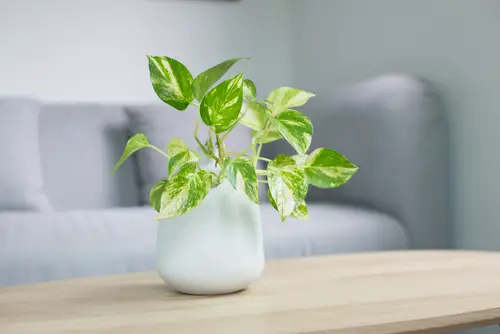
One reason why your pothos plant may be dripping water is due to guttation. Guttation is a natural process that occurs when excess liquid is pushed out of the plant through the tips of the leaves. This liquid is not the same as the water you give your plant, but rather excess water that the plant has absorbed through its roots.
Guttation is a common phenomenon in pothos plants, especially when the humidity levels are high. This is because the plant tries to balance the liquid in its system by releasing the excess water vapor through the leaves. As a result, you may notice droplets of water on the leaves of your pothos plant.
2. Concept of Transpiration
Another reason why your pothos plant may be dripping water is due to transpiration. Transpiration is the process through which plants lose water through tiny pores called stomata, usually found on the leaves. This process is essential for the plant’s survival as it helps in the absorption of nutrients and minerals.
However, when the humidity levels are high, the plant may not be able to transpire effectively, leading to excess water buildup. This excess water may then be released through the leaves, resulting in droplets of water on the plant.
3. The Phenomenon of Sweating
Sometimes, your pothos plant may appear to be sweating, which is also a result of excess water buildup. This usually happens when the plant has been overwatered, and the excess water cannot be absorbed by the roots. As a result, the water may accumulate in the leaves, causing them to release droplets of water.
To prevent your pothos plant from sweating, ensure that you do not overwater it. Pothos plants prefer moist soil, but too much water can lead to root rot and other issues.
Overwatering and Its Effects
Signs of Overwatering
Overwatering is one of the most common reasons why a Pothos plant may drip water. When a Pothos plant is overwatered, the roots become waterlogged, which can cause a host of problems.
One of the most noticeable signs of overwatering is the plant’s leaves becoming limp and droopy. The leaves may also turn yellow and fall off the plant.
Another sign of overwatering is the soil being consistently wet or moist. If the soil is always wet, it can lead to root rot, which is a serious condition that can kill the plant. The roots may also appear brown and mushy.
Preventing Overwatering
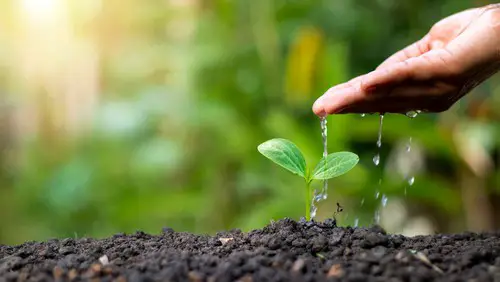
To prevent overwatering, it is important to establish a proper watering schedule. Pothos plants prefer soil that is slightly dry, so it is best to let the soil dry out between waterings. A good rule of thumb is to water the plant when the top inch of soil is dry to the touch.
It is also important to ensure that the plant is not sitting in excess water. If the plant is in a pot with no drainage holes, it can lead to water accumulating in the bottom of the pot, which can cause the roots to become waterlogged.
To prevent this, make sure the pot has drainage holes and that excess water is able to drain away from the plant.
Finally, it is important to monitor the humidity levels around the plant. Pothos plants prefer a slightly humid environment, but if the humidity is too high, it can lead to guttation, which is the process of water droplets forming on the tips of the leaves.
If the humidity is too low, the plant may become dehydrated. A good way to monitor humidity levels is to use a hygrometer, which can be purchased at most garden centers or online.
Importance of Proper Drainage
Proper drainage is crucial for the health of a pothos plant. Without it, excess water can accumulate in the soil, leading to root rot and other issues. In this section, we will discuss the role of perlite in drainage and how to improve drainage in your pothos plant.
Role of Perlite in Drainage
Perlite is a type of volcanic glass that is often used in potting soil to improve drainage. It is lightweight and porous, allowing water to flow through the soil and out of the drainage holes in the bottom of the pot. When mixed with other soil components, such as peat moss or coconut coir, it can create a well-draining soil that is ideal for pothos plants.
How to Improve Drainage
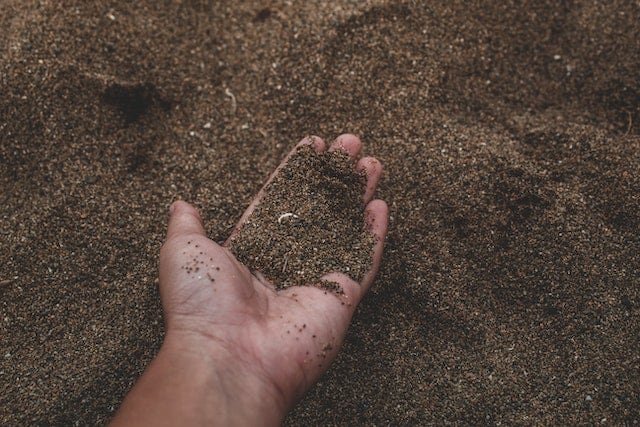
There are several ways to improve drainage in your pothos plant. The first is to ensure that your pot has drainage holes in the bottom. Without these holes, excess water will have nowhere to go, and it will accumulate in the soil.
If your pot does not have drainage holes, consider drilling some yourself or transferring your plant to a pot that does.
Another way to improve drainage is to use a well-draining soil mix. This can be achieved by mixing perlite, peat moss, and/or coconut coir with regular potting soil. The ratio of these components will depend on the specific needs of your pothos plant, but a good rule of thumb is to use equal parts of each.
Finally, it is essential to water your pothos plant correctly. Overwatering is one of the most common causes of poor drainage and root rot. Wait until the top inch of soil is dry before watering, and be sure to allow excess water to drain out of the bottom of the pot.
By ensuring proper drainage, you can help your pothos plant thrive and avoid common issues such as root rot. Remember to use perlite and other well-draining components in your soil mix, provide adequate drainage holes in your pot, and water your plant correctly.
Role of Humidity and Temperature
Effects of High Humidity
Pothos plants are native to tropical regions, so they are accustomed to high humidity levels. However, excessive humidity can cause them to drip water.
When the humidity is too high, the plant’s stomata, which are responsible for transpiration, close up to prevent water loss. As a result, excess water builds up in the leaves and eventually drips off.
If the humidity is consistently high, it can also lead to fungal diseases and pest infestations. To prevent these issues, it is important to maintain a moderate humidity level of around 50-60%. If the humidity is too high, consider using a dehumidifier or moving the plant to a location with better air circulation.
Temperature Requirements
Pothos plants prefer temperatures between 65-85°F (18-29°C). If the temperature is too high, the plant may transpire more rapidly, leading to excessive water loss and wilting. On the other hand, if the temperature is too low, the plant’s growth may slow down, and it may become more susceptible to diseases and pests.
It is important to keep the plant away from drafts, such as near windows or air conditioning vents, which can cause temperature fluctuations. If the room temperature is consistently too low, consider using a heating mat or moving the plant to a warmer location.
Nutrients and Fertilizer Application

Understanding Fertilizer Requirements
Pothos plants require a balanced fertilizer to thrive. The three primary nutrients that pothos plants need are nitrogen, phosphorus, and potassium. Nitrogen is essential for leaf growth, while phosphorus is necessary for root development and flower production. Potassium helps to regulate water movement and aids in overall plant health.
When selecting a fertilizer for your pothos plant, it is important to choose one that is balanced and contains all three of these essential nutrients. Most fertilizers will have a label that indicates the ratio of nitrogen, phosphorus, and potassium. A balanced fertilizer will have an equal ratio of each nutrient, such as 10-10-10.
It is important to follow the fertilizer’s instructions carefully, as over-fertilizing can harm your pothos plant.
Effects of Over-Fertilizing
Over-fertilizing can lead to a build-up of salts in the soil, which can damage the roots of your pothos plant. This can cause the plant to stop growing, wilt, or even die.
Signs that your pothos plant may be over-fertilized include yellowing or browning leaves, stunted growth, and a salt build-up on the soil surface. If you notice any of these signs, it is important to stop fertilizing your pothos plant immediately.
To fix an over-fertilized pothos plant, you can flush the soil with water to remove the excess salts. You can also repot the plant in fresh soil to give it a fresh start.
Identifying and Managing Pothos Diseases
Common Pothos Diseases
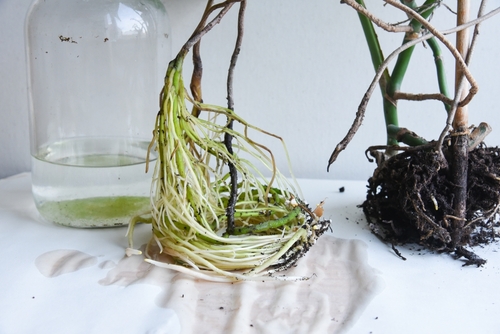
Pothos plants are generally hardy and disease-resistant, but they can still fall prey to certain diseases. Here are some common pothos diseases to watch out for:
- Root Rot: This is a common problem with pothos plants, especially if they are overwatered or the soil is not well-draining. Symptoms of root rot include yellowing leaves, wilted stems, and a foul odor from the soil. To fix it, remove the plant from the soil, trim away any rotting roots, and repot it in fresh soil.
- Bacterial Leaf Spot: This disease manifests as small, water-soaked spots on the leaves that eventually turn brown and dry out. It is caused by bacteria and can spread rapidly in humid conditions. To prevent it, avoid overhead watering and make sure the plant has good air circulation.
- Powdery Mildew: This is a fungal disease that appears as a white, powdery coating on the leaves. It can be caused by high humidity or poor air circulation. To prevent it, make sure the plant has good air circulation and avoid overhead watering.
Preventing Diseases
Preventing pothos diseases is often easier than treating them. Here are some tips for preventing diseases in your pothos plant:
- Watering: Overwatering is a common cause of pothos disease, so make sure to water your plant only when the top inch of soil is dry. Use well-draining soil and a pot with drainage holes to prevent water from sitting in the soil.
- Humidity: Pothos plants enjoy humidity, but too much can lead to disease. Use a humidifier or mist the leaves occasionally to maintain a moderate level of humidity.
- Air Circulation: Good air circulation can prevent the buildup of moisture and the spread of disease. Place your pothos plant in a well-ventilated area or use a fan to circulate air.
- Sanitation: Clean your pruning shears and other gardening tools with rubbing alcohol before and after using them on your pothos plant. This can prevent the spread of disease from plant to plant.
By following these tips, you can keep your pothos plant healthy and disease-free. If you do notice signs of disease, act quickly to prevent it from spreading to the rest of the plant.
Dealing with Pests and Insects

Common Pests
Pothos plants are generally resistant to pests and insects, but they can still fall victim to a few common ones. Here are some of the most common pests that can affect pothos plants:
- Spider Mites: These tiny pests are difficult to see with the naked eye and can cause damage to the leaves by sucking out the sap. Signs of a spider mite infestation include yellowing leaves and webbing on the plant.
- Mealybugs: These small, white insects can be found on the underside of the leaves and along the stems. They feed on the sap of the plant and can cause stunted growth and yellowing of the leaves.
- Thrips: These small, slender insects can cause damage to the leaves by sucking out the sap. Signs of a thrip infestation include silver streaks on the leaves and black fecal matter.
If you notice any of these pests on your pothos plant, it’s important to act quickly to prevent the infestation from spreading.
Preventing Pest Infestations
Prevention is key when it comes to keeping your pothos plant free from pests and insects. Here are some tips to help prevent infestations:
- Inspect new plants before bringing them home and isolate them for a few weeks to ensure they are pest-free.
- Keep your pothos plant healthy by providing it with the right amount of water, light, and nutrients.
- Avoid over-fertilizing your plant, as this can attract pests.
- Keep your plant clean by wiping down the leaves with a damp cloth to remove any dust or debris.
- Use natural pest control methods, such as neem oil or insecticidal soap, to treat any infestations.
By following these tips, you can help keep your pothos plant healthy and pest-free.
Repotting Your Pothos
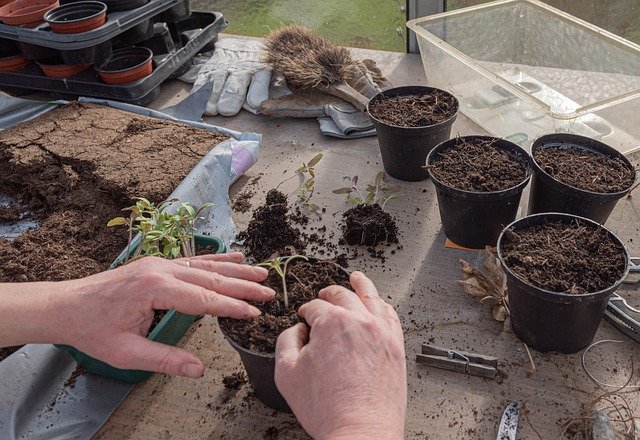
When to Repot
Pothos plants generally need to be repotted every two years, or when they outgrow their current pot. Signs that it’s time to repot your pothos include roots growing out of the drainage holes, the soil drying out quickly after watering, and the plant becoming root-bound.
How to Repot
To repot your pothos, follow these steps:
- Choose a pot that is one size larger than the current pot and has drainage holes.
- Gently remove the pothos from its current pot and loosen the roots.
- Fill the new pot halfway with fresh potting soil.
- Place the pothos in the new pot and fill in the rest of the space with soil, leaving about an inch of space at the top.
- Water the pothos thoroughly and allow the excess water to drain out of the bottom.
- Place the pothos in a bright, indirect light location and avoid direct sunlight.
- Water the pothos when the top inch of soil is dry.
It’s important not to overwater the pothos after repotting, as this can lead to root rot. It’s also important not to compact the soil too tightly, as this can prevent water and air from reaching the roots.
Frequently Asked Questions
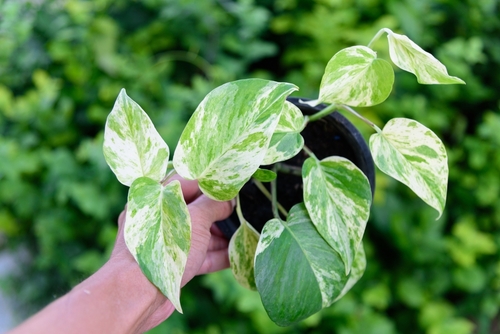
What causes water droplets on indoor plant leaves?
Water droplets on indoor plant leaves can be caused by either guttation or transpiration. Guttation occurs when excess water is released from the plant’s pores due to high soil moisture levels.
Transpiration, on the other hand, is the process by which plants lose water through tiny pores called stomata, usually found on the leaves.
What does it mean when a plant drips water?
When a plant drips water, it means that it is releasing excess water through guttation or transpiration. This is a normal process that occurs in almost every vascular plant.
Do pothos release water?
Yes, pothos plants release water through guttation or transpiration. This is a normal process that occurs in healthy plants.
What are the signs of overwatering pothos?
The signs of overwatering pothos include yellowing leaves, wilting, and root rot. Overwatering can lead to soil saturation, which can suffocate the roots and cause damage to the plant.
How to tell the difference between overwatered and under watered pothos?
Underwatered pothos will have dry soil and droopy leaves, while overwatered pothos will have wet soil and yellowing leaves. It is important to strike a balance between watering the plant enough and not overwatering it.
Is guttation bad?
No, guttation is not bad. It is a normal process that occurs in healthy plants. However, excessive guttation can be a sign of overwatering, which can lead to root rot and other issues.

Hey, I’m Lisa and I’ve been an avid gardener for over 30 years. I love writing, talking and living in the garden! Feel free to connect with me on my socials below

